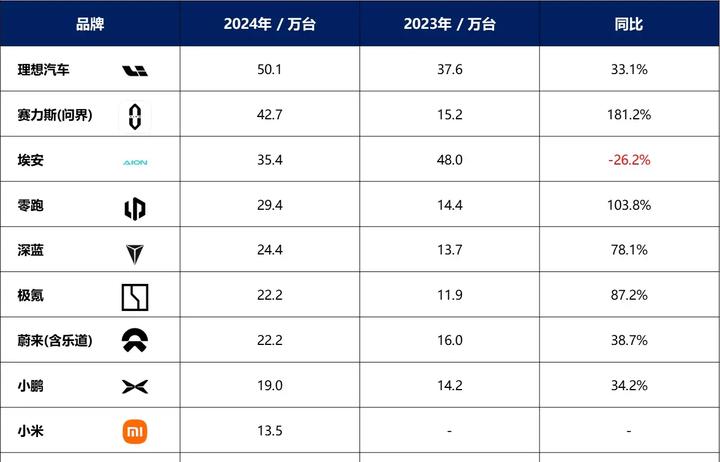Chinese Auto Market Evolution: BYD Leads Record Sales in 2024
Analysis of 2024 Chinese automotive sales data reveals BYD’s dominance with 4.27 million units sold, while SAIC’s total deliveries reached 401.3 million. New energy vehicle makers like Tesla and Li Auto achieved significant growth, reshaping market dynamics.

The Chinese automotive market witnessed a transformative year in 2024, with several key manufacturers posting remarkable performance figures. This analysis explores the shifting landscape and emerging trends in the world’s largest automotive market.
BYD’s market dominance stands as the most striking development. The Shenzhen-based manufacturer delivered 427.21 million vehicles in 2024, achieving 41.26% year-on-year growth. Their overseas sales performance proved particularly impressive, with 417,204 units representing a 71.9% increase from the previous year.
Tesla’s performance in the Chinese market proved equally noteworthy. Despite a 9.57% decline in December sales to 37,319 units, their annual deliveries surged by 182.84% to reach 426,900 vehicles. This dramatic growth positions Tesla as a formidable competitor in China’s new energy vehicle sector.
Traditional manufacturers also demonstrated significant adaptability. SAIC Group, one of China’s largest automotive conglomerates, reported total deliveries of 463.9 million units, with new energy vehicle sales reaching 123.4 million units, representing a 9.9% increase.
Emerging players have made substantial impacts. XPeng’s December deliveries reached 36,695 units, marking four consecutive months of record highs. Li Auto achieved its ambitious target of 500,000 annual deliveries. Zeekr’s strong December performance of 31,138 units helped push their cumulative delivery total to 671,600 vehicles.
The market’s evolution reflects broader industry trends. Chinese manufacturers have demonstrated increasing technological sophistication and quality improvements. International expansion has become a key focus, with companies like BYD and NIO establishing strong presences in European markets.
The competitive dynamics between traditional automakers and new energy vehicle specialists continue to evolve. While established manufacturers leverage their production expertise and brand recognition, new entrants differentiate through technological innovation and user experience.
This transformation extends beyond sales figures. The rapid advancement of Chinese automotive technology, particularly in battery development and autonomous driving capabilities, suggests the industry’s center of gravity may be shifting eastward. The implications for global automotive manufacturing and technology development appear increasingly significant.
Manufacturing efficiency and supply chain optimization have played crucial roles in this success. Chinese manufacturers have demonstrated remarkable ability to scale production while maintaining quality standards, a capability that proves particularly important in the competitive new energy vehicle segment.
The data indicates a clear trend toward electrification, with new energy vehicles comprising an increasingly large portion of total sales. This shift aligns with China’s environmental policies and technological development goals, suggesting continued growth in this sector.